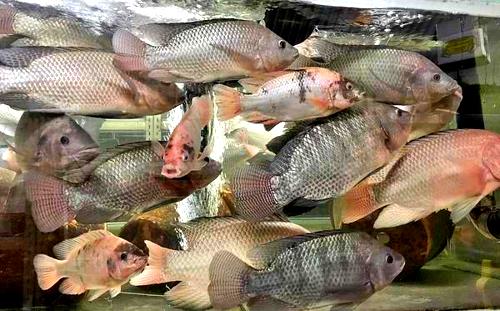Tilanggit (small-sized tilapia) is hitting it big in the local market. The export market, however, is keener on big–sized tilapia with enough flesh for fillet production.

Under the Philippine Council for Agriculture, Aquatic and Natural Resources Research and Development-coordinated NTRDP, researchers from the Central Luzon State University are taking up the twin challenge of stepping up local production of tilapia while enhancing our capacity to compete in the world market.
The Philippines is the fifth largest producer of tilapia in the world but is bested by Indonesia, Thailand, and Bangladesh in the export market.
Dr. Tereso A. Abella, program leader of the National Tilapia Research and Development Program (NTRDP), says the country’s market-sized tilapia at 143?200 g falls short of the global requirement of 400?500g for live fish and 700?1,000 g for fillet fish. This means lost market opportunity.
Still, the industry for the domestic market has much room for growth. Tilapia remains as a poor man’s fish and a good bet to fill in the country’s food basket.
With several genetically improved Nile tilapia strains already commercialized, the key is to innovate on existing nursery and grow-out culture systems to suit the requirements for large-sized fish and intensive production.
Recent reports from the Department of Science and Technology-funded program “Innovative approaches to Nile tilapia culture” are pointing out some headstarts.
Its program leader, Dr. Emmanuel Vera Cruz, is looking at stress response of tilapia breeders as a possible criterion for broodstock selection. His study noted changes in eye color pattern and ventilation rate that are (frequency of opercular movements) associated with social interaction of genetically male tilapia.
Meanwhile, project leader Dr. Rosalie Rafael has produced probiotics from fermented leaves of red creole onions and shallots, locally known as “sibuyas Tagalog”. When added to feeds of tilapia at 10% volume to weight, the probiotic improved the growth of tilapia over the 30-day feeding trial.
The effect of sex reversal using alpha-methyl testosterone, a steroid on improving fish growth, has been established. But the fate of residues of the steroid in water and on soil is potentially a health risk.
The research team of Dr. Abella is therefore looking at plant-based substances from the pine pollen as alternative growth stimulant and agent for sex inversion for tilapia.
Complementing the laboratory researches is a field survey and mapping in Pampanga to identify ecological risks faced by tilapia farmers.
For this survey, Mr. Alvin Reyes has prepared more than 20,000 hectares of digitized maps to start off a geo-referenced database.
With more innovations to be developed within the three years of the program, a three-fold increase in average production of tilapia farms is anticipated.

Dear Sir/Mam,
I am an OFW from Oman ang planing to go back for good in Philippines and i want to put up and continue my fish farming. I want a big help from you as a beginner to pursue this kind of business.
I am looking forward to hear from you and willing to visit and learn more about fish farming.
Thanks and regards,
Shirley Dalagan